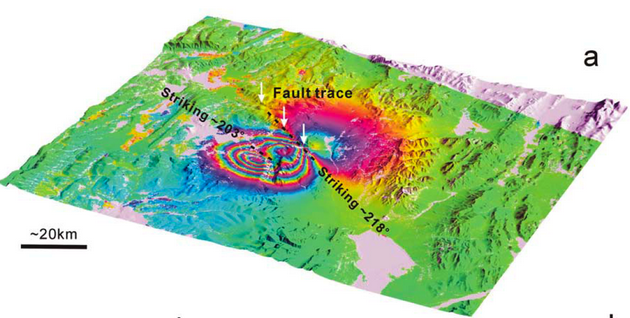| News |
| Latest news | |
| Int’l Cooperation activities | |
| Events & Announcement | |
| Recent Activities |
| Location: Home>News>Recent Activities |
| Geology reports ITP latest discovery of crustal fluid in earthquake triggering mechanism |
Take a sequence of three earthquakes of Ms = 6.4, 5.9, and 5.4 in southern central Tibet in January 2008 as a case study, ITP Prof. HE Jiankun and his colleague developed a three-dimensional finite element model, integrating the Interferometric satellite aperture radar (InSAR) observations, to calculate the Coulomb stress change due to poroelastic deformation in the crust after the first event. Their study found the sudden increase of the poroelastic Coulomb stress on the second fault after the first earthquake by 1 x 105 Pa and the continued increase by as much as 70% in the subsequent week. The identified two largest events occurred on two northeast-trending, northwest-dipping normal faults, separated by 9.5 km, with slip reaching 1.2 m on the main fault and 0.75 m on the second. The distribution of Coulomb stress change, in particular, correlated precisely with the slip on the second fault. These findings suggest that the first earthquake not only triggered the second event, but the Coulomb stress change it induced on the second fault plane controlled the extent of the second rupture. Their study proffer solid base for the role of crustal fluid in earthquake dynamics, and was recognized by internationally acknowledged journal Geology. For further reading, please refer to He and Peltzer, 2010, Poroelastic triggering in the 9–22 January 2008 Nima-Gaize (Tibet) earthquake sequence.
|


